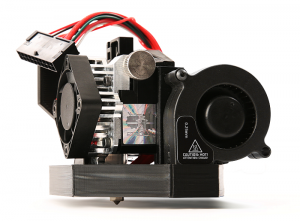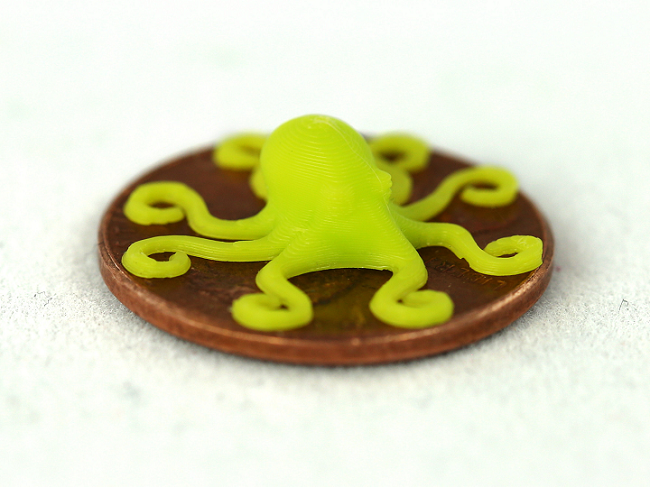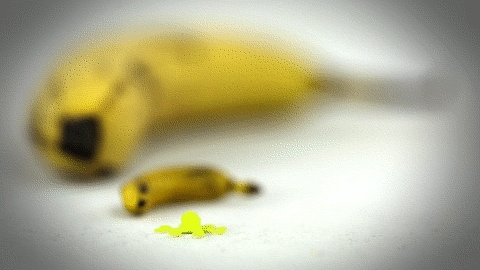This spring, at RAPID 2018 in Texas, Aleph Objects introduced the LulzBot Mini 2, with a belt-driven Z-axis and several accessories, including the LulzBot modular bed system and a next generation Aerostruder Tool Head designed around the E3D Titan Aero hot end and extruder. Now, the company has introduced a new tool head – the Aerostruder v2 Micro, capable of accurately 3D printing parts the size of a penny and demonstrated this week at SIGGRAPH 2018 in Vancouver.
“Many LulzBot users, seeking finer print resolution, have installed after-market nozzles with varying success. However, delivering a reliable high resolution FFF printing experience is not just about swapping out the nozzle. First it requires the best extruder and hot end on the market, which we’ve found in the E3D Titan Aero. From there it’s all about utilizing our knowledge of material properties and thousands of hours of printing experience to hone print profiles that are then extensively tested,” Aleph Objects Product Specialist Adam Straight told 3DPrint.com.
“Frankly, I think some of us are still shocked at the detail possible with this tool head. We’re seeing details on models that weren’t visible before, and we’re printing things that weren’t possible before!”
 The Aerostruder v2 Micro Tool Head, which is compatible with the LulzBot Mini 2 3D printer, makes it possible to create extremely precise, finely detailed 3D prints, thanks to the genuine E3D Titan Aero Extruder/Hot End that Straight mentioned. The Titan Aero, with a 0.25 mm nozzle, offers 360° part cooling, which the company says can create detailed prints with great bridge and overhang performance.
The Aerostruder v2 Micro Tool Head, which is compatible with the LulzBot Mini 2 3D printer, makes it possible to create extremely precise, finely detailed 3D prints, thanks to the genuine E3D Titan Aero Extruder/Hot End that Straight mentioned. The Titan Aero, with a 0.25 mm nozzle, offers 360° part cooling, which the company says can create detailed prints with great bridge and overhang performance.
UK-based E3D Online Ltd., which develops and manufactures premium 3D printer components, has been partnering with Aleph Objects for two years now. Both companies share the same commitment to developing open source hardware for 3D printing.
“Aleph Objects probably [has] the most useful and interesting array of tool heads for their 3D printers, and E3D is excited to contribute its expertise to a tool head that really pushes the limits of the technology – it’s a lot of fun collaborating with a like-minded company that also trusts their users to really engage openly and freely with the technology,” said Sanjay Mortimer, the Co-Founder and Director of E3D Online Ltd. “There’s a lot more to come from this collaboration, and we feel like we’re just getting started.”
This new tool head is an excellent option for 3D artists, designers, and engineers who want increased surface quality and detail. It allows users to 3D print accurate parts at the penny-scale, while also providing the reliability and convenience that the company’s LulzBot ecosystem is well-known for providing.
“The Aerostruder v2 Micro Tool Head—paired with the LulzBot Mini 2 3D Printer—has changed my perception of what is possible with filament 3D printing,” said Straight. “In terms of resolution and surface finish, the prints from this new tool head are very impressive. The precision of E3D Titan Aero extruders and hot ends complements the premium quality built into every LulzBot 3D Printer.”
The Aerostruder v2 Micro Tool Head from Aleph Objects was showcased, together with the LulzBot Mini 2, at the company’s SIGGRAPH 2018 booth earlier this week. A “micro art gallery” of 3D printed miniature art exhibits was also on display, to show what the new tool head is capable of. The Aerostruder v2 Micro should be available for purchase by the end of next month. If you’d like to be notified when this new product is released, you can sign up here.
What do you think about this new product? Discuss this story, and other 3D printing topics, at 3DPrintBoard.com, or share your thoughts in the Facebook comments below.
[Images provided by Aleph Objects]








